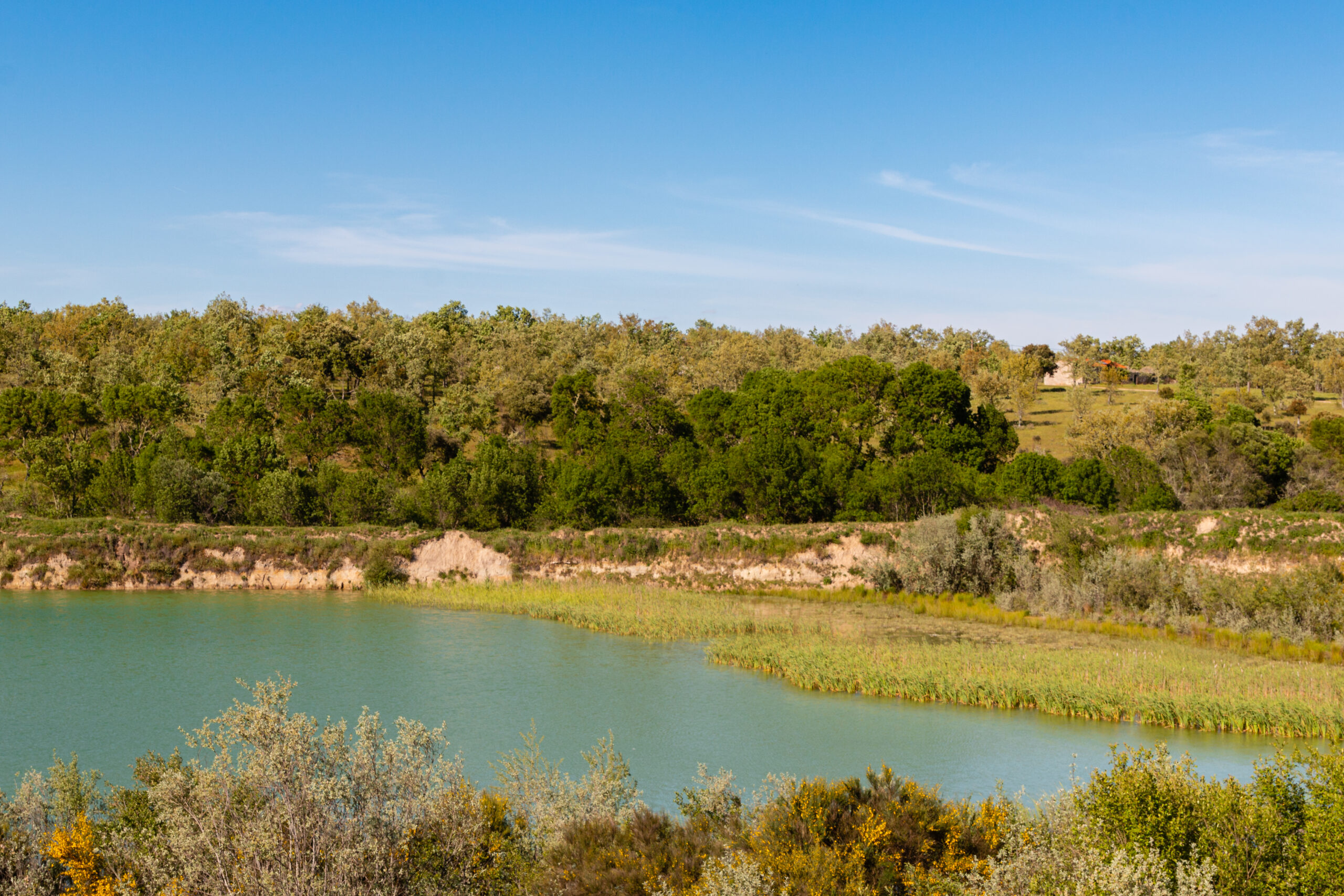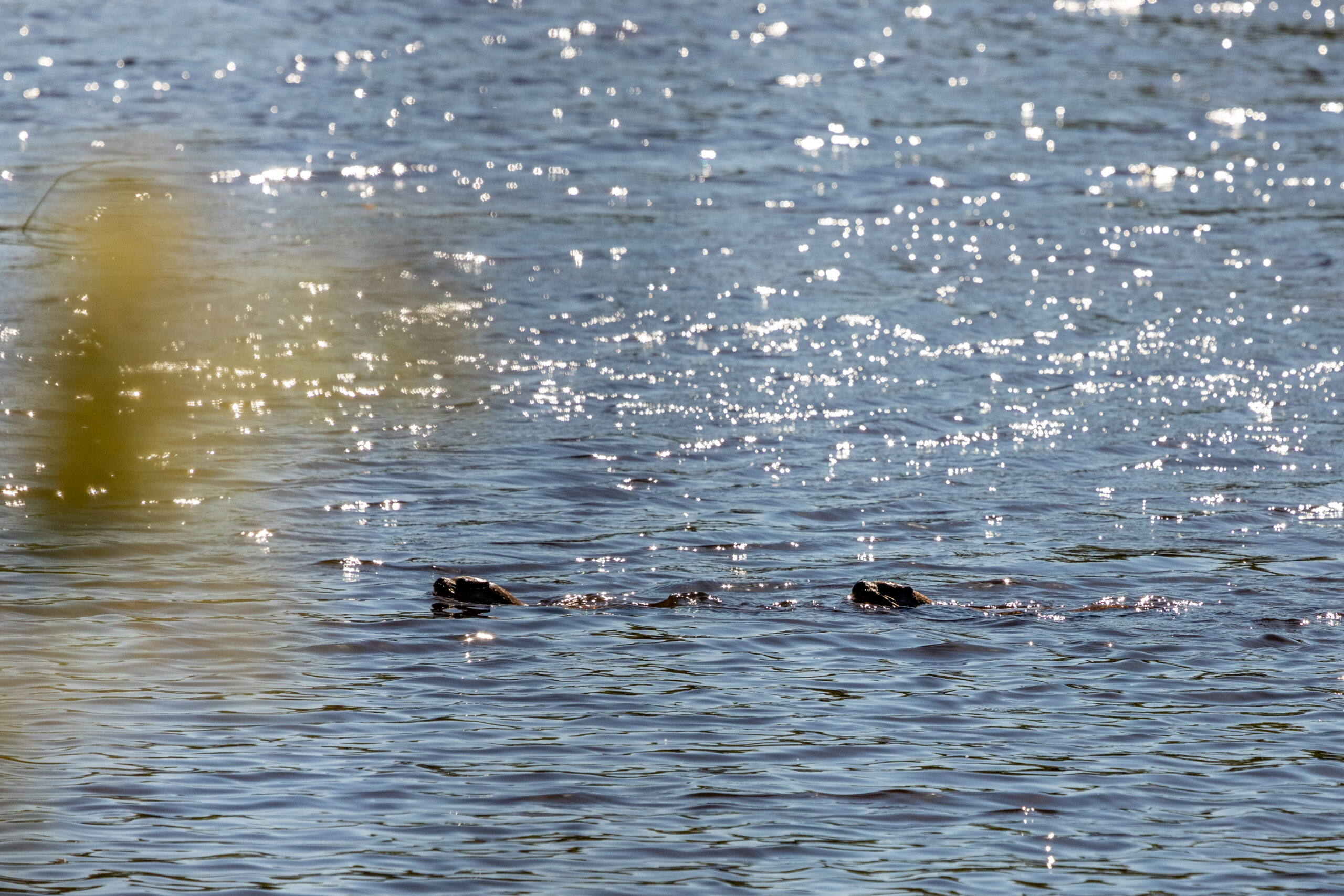Quinta de Santa Margarida, which for many years served as a source of ore and employment in the “Raia” region between the municipalities of Sabugal and Almeida, was recently acquired by Rewilding Portugal, which now intends to transform the space into a reserve for wildlife. This article exposes Rewilding Portugal’s vision for the place, with a view to promoting the rich natural heritage of this region.

Spring 2040 in the Greater Côa Valley, source of the Toirões River. What began with a property of almost 300 hectares, is now 3,000 hectares dedicated to nature conservation, in a cross-border corridor that connects the Côa river to the Iberian plateau. It starts between the mouth of Cesarão and the hill of Badamalos, progressing through Vale Carapito and through mature deciduous forests (dominated by black oak), until reaching the wetland of the former Quinta de Santa Margarida, known today as Paul dos Toirões.
In this oasis in the Greater Côa Valley, water, scarce on the plateau, is abundant here. Major machinery transformations shaped the former mine into areas of lakes, deltas, temporary ponds and sedges. The beaver’s return keeps the wetland in a dynamic and diverse state. The black oak forest is now dense and mature, with wild fruit trees such as wild apple trees, wild pear trees, sloes, cherry trees, mostajeiros and chestnut trees. From the old Cupressus plantation there are only a few large individuals, used by birds of prey to build their nests. The main ponds are now covered by a mantle of submerged aquatic plants and water lilies with white and yellow flowers that give color to the lakes and shelter amphibians, reptiles, dragonflies and molluscs, or even the lacustrine trout, a major symbol of the success of this restoration that continues to happen and to seethe in this region.

The presence of a diverse community of large herbivores, such as deer, Sorraia horses and tauros, prevents forest fires by controlling the amount of biomass and creates the conditions for small animals to thrive.
The abundance of ducks, pigeons, partridges and rabbits created the ideal conditions for the return of the charismatic Iberian lynx and the majestic imperial eagle, as well as the nesting of several birds of prey. The good densities of wild boar and roe deer, combined with the expansion of the deer population from Spain and the Malcata mountains to this area, favored the Iberian wolf, which has always inhabited the region, but which now feeds on wild prey rather than domestic cattle and plays its role as the top predator in the ecosystem. In the skies, three of the four species of scavengers can be seen. The griffon vulture, the white Egyptian vulture and the imposing cinereous vulture benefit from the increase of animal carcasses, thanks to the presence of the wolf that hunts large herbivores. With the presence of several top predators, the abundances of fox, mongoose and wild boar, previously unbalanced, decreased and is now stabilized.

The presence of a great diversity of invertebrates associated with aquatic environments such as molluscs, insects and crayfish, as well as the various species of amphibians and reptiles that inhabit the lakes create a complex food web that sustains resident and migratory birds during the passage of Spring and Autumn. A pair of beautiful osprey now nest in the region and several pairs of black stork nest in the large trees of the Paul, while heron nests can be observed in the more inaccessible willows. Large groups of migratory species can be observed in different seasons, in a space that is always dynamic and always full of life, where some winged visitors give way to others as the seasons change. The removal of large extensions of barbed wire facilitated the passage and dispersal of animals.
Visitors and students from Portugal and Europe visit the Greater Côa Valley and the oasis of this property is now one of the gems of this wild landscape. Herbivores migrate between the valley and the plateau, at the rhythm of the seasons. Large herbivores are a show worthy of seeing in the landscape, as at the time of the roar of the deer, in the fights of wild horses or in the duels of the imposing maronesa cows. And the diversity of birds gives color and sunshine to the blue sky.

The development of this new natural area has created new economic opportunities for local populations through indirect benefits in ecosystem services. Forest leaves covered the ground in a mantle where organic matter increased, also thanks to the excrement of large herbivores. The bare soils of older times were covered with diverse natural pastures and wetter forests. Now the entire system filters more water and captures more carbon directly from the atmosphere, a business model that has led many neighbors to join the carbon credit cooperative, adopting best practices for this important function of rewilding landscapes.
Aquifers now withstand better periods of drought, providing water to villages in the region, when in other areas it is scarce. The Toirões river is not dry as long as it used to be, fed by the Paul, who works like a sponge, absorbing the less frequent and more unstable rain.
Direct jobs, in the form of nature tourism, are a pioneering example of economic development going hand in hand with nature conservation and restoration. The villages and towns with their unique historical and mystical charge are the gateway to a new wild world teeming with life. The rebirth of nature led to the rejuvenation of these small villages.
The old mine is now a swampland for the benefit of people and nature and is the ideal metaphor for a new economy that, instead of destroying and exploiting, restores and conserves. In these uncertain times of climate change and mass extinctions, this is the right choice.
